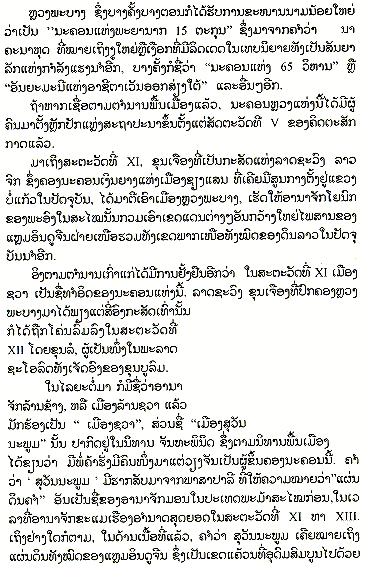Luang Prabang has sometimes been called the "City of
the 15 families of Nagas" (from Pall naga: a mystical snake symbolizing strength) or
"City of the 65 Monasteries", and in more recent times, the
"Jewel of South East Asia". According to local annals,
this capital has been in existence since the 5th century B. C. It was conquered
by Khoun Chuang, of the Lao Chok Dynasty who was king of Ngeun Gnang in Xieng Sen (Xieng
Sen, a former territory the center of which is present-day Bokeo province). Yonok ([an Na
Kingdom) included the northern part of Indochina with the whole of northern Laos in its
entirety.
According to written evidence from the XLth century the
city's first name was Muang Sua. The Khuon Chuang Dynasty governed Luang Prabang for four
generations before being overthrown in the XIIth century by Khoun Lo, one of Khoun
Boulom's seven sons. This city was later called Muang Lan Xang, or Lan Xua, in the form
"Muang Xua".
Muang Souvannaphoum is described in the history of
Chanthaphanit, where the local annals state that a rich trader from Vientiane reigned over
the city.
Another name Suvannaphoum is derived from the Pali:
Suvannabhumi meaning 93Country of Gold94. This name was used to designate the ancient Mon
state of Burma at the height of the Khmer empire from the XIth to XIIIth century. In a
wider sense Suvannaphoum referred to the Indochinese Peninsula - a region that contained
this precious metal and was known from antiquity for its trade between Europe and Asia.

